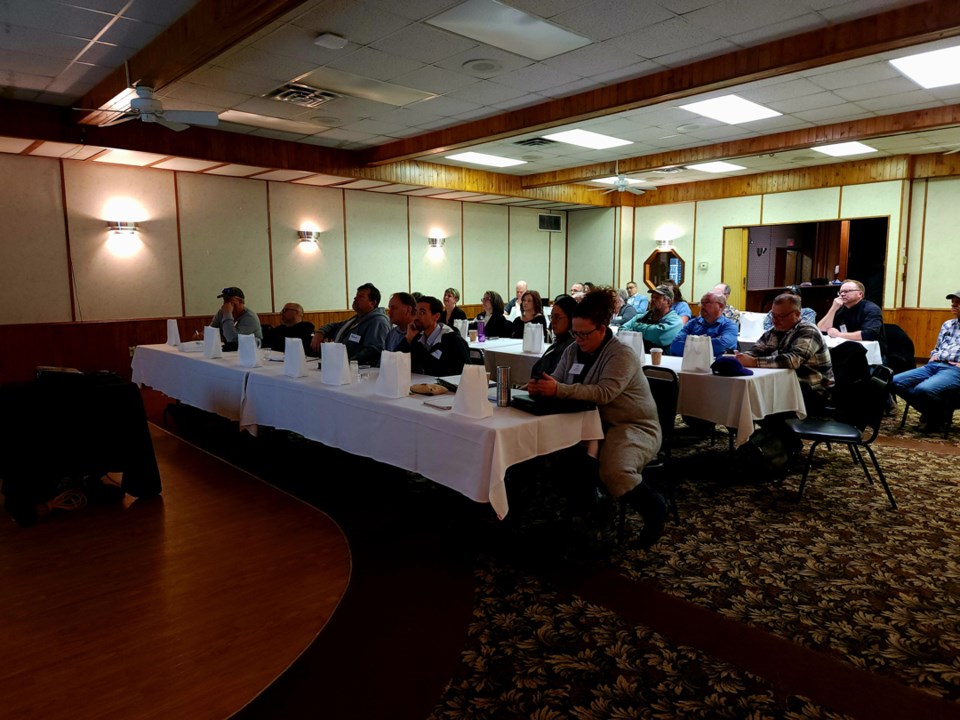ESTEVAN - Local producers and others had the opportunity to hear about the economic benefits of irrigation during a meeting held at the Days Inn Estevan on Feb. 8.
The session was organized by the Saskatchewan Irrigation Projects Association (SIPA), which is a producer-based organization, and the Southeast Sask. Economic Partnership (SSEP), which is trying to further diversify the economy of the region.
Julie-Anne Howe, who is the vice-chair of SIPA, said she was pleased with the attendance and the number of RMs who showed an interest.
“This was an introductory meeting to allow the RMs around the Rafferty and Alameda Dams to learn about irrigation and process of irrigation development, and the economic impacts of developing irrigation in their RMs and the GDP spinoff,” said Howe.
Those who were present learned what SIPA does, how it helps facilitate irrigation development in the province, and how it connects irrigators and RMs with the right people to get the process going.
An agricultural producer south of Moose Jaw, Howe talked about the impacts of irrigation for her operation. Also, Cara Drury with the Ministry of Agriculture discussed the irrigation process from the government side.
“Irrigation is really the linchpin for my operation, because I can pressure so I have water and timely water to irrigate my crops, which guarantees that I have feed for my cattle, as I am a cow-calf producer,” she said. “Without irrigation, I would not be able to sustain my cows on my land base, and I would be very limited on the types of crops that I am able to grow.”
Having a guarantee of water really increases her options for growing different crops on the land, and she not only grows feed and forage for cattle, she can sell and provide feed for other operations locally as well, which can have a significant economic impact.
“The fairly long-term drought that we had locally has really impacted people’s ability to secure and assure themselves that they do have feed for the following year,” she said.
Economic impacts for the Moose Jaw area of the Baildon Irrigation District were estimated to be a GDP input of $247 million with 88 jobs, according to an economic analysis by Jillian Brown in 2022.
Howe said the meeting in Estevan was a great introductory gathering. People are definitely interested because they want to achieve growth and security in Estevan, and they want to know how irrigation can fit into the local economy.
Many of the RM council members are producers themselves, too, she said.
Estevan has the opportunity to develop transportation hubs and food hubs to move beyond Saskatchewan to eastern Canada and the U.S., she said.
“Irrigation is a really great tools for farmers to have security because they know they will have a crop,” she said.
Howe said the next step will be to decide their interest in irrigation through process decisions that need to be made by RMs and individuals; make decisions on the water supply and security through the Saskatchewan Water Security Agency; and do some investigations on soil types and suitability to see where irrigation is a potential fit.
Then they would need to do an individual economic impact analysis to see how it would fit within their RMs and operations.
She also pointed out that conversations were held with the SSEP about the next steps for further irrigation workshops with individuals who are interested.
“It’s a multi-year process, because it’s a significant investment for the individuals, so coming to have the idea and bringing a voice together takes a little bit of time, and then the actual approval process and development process takes 18 months itself once you’ve decided to move forward,” said Howe.



